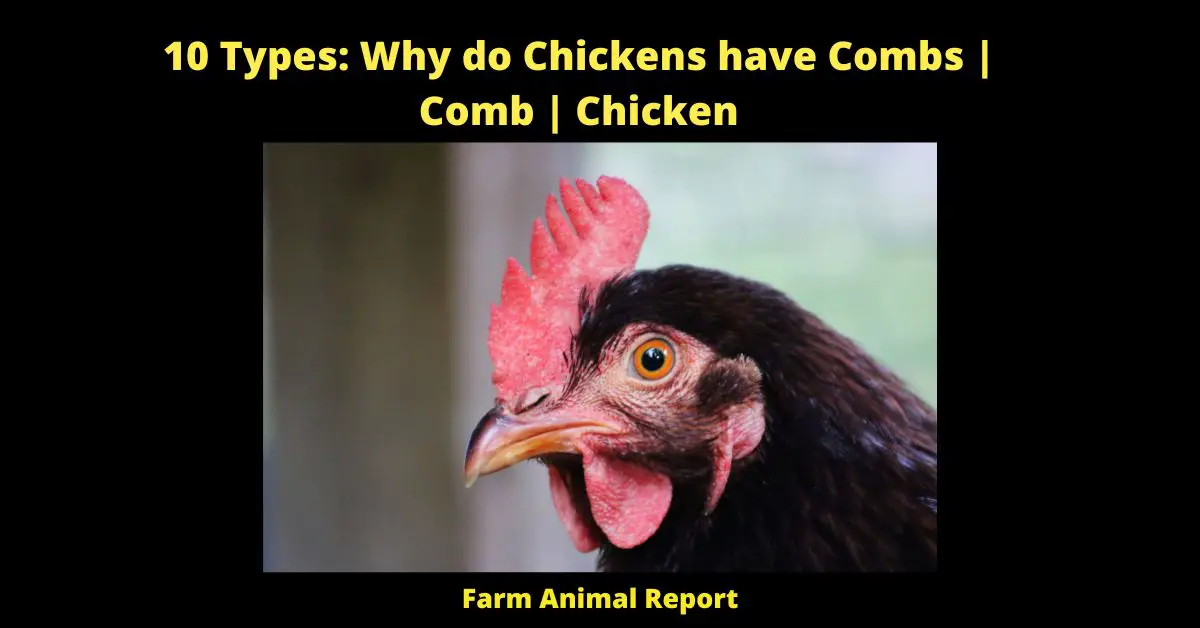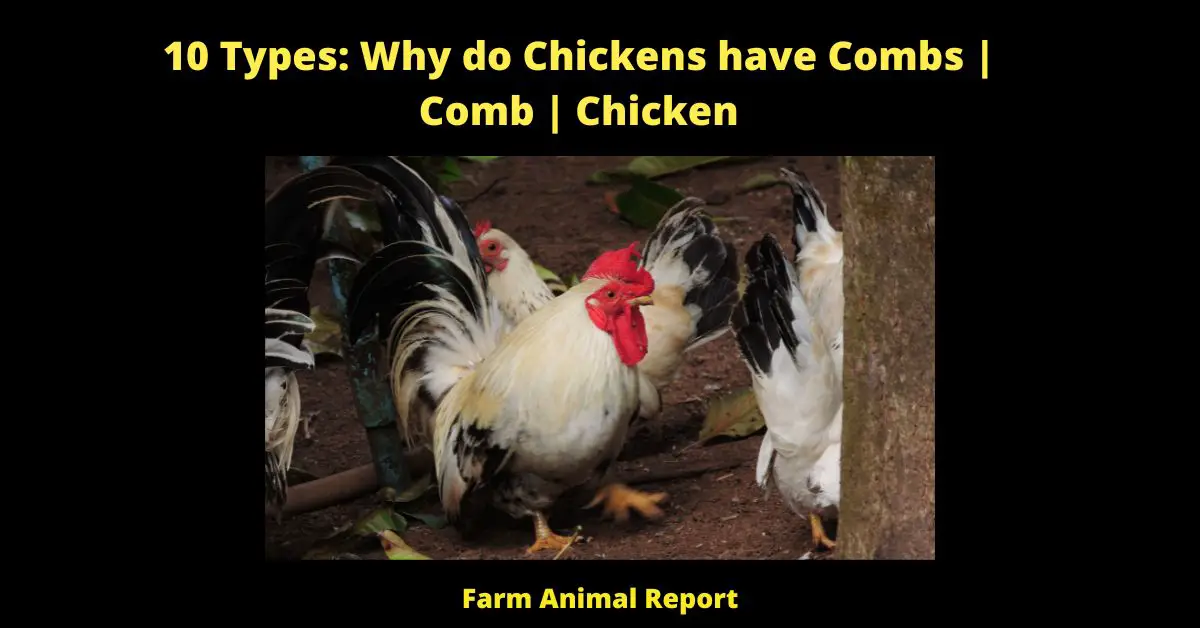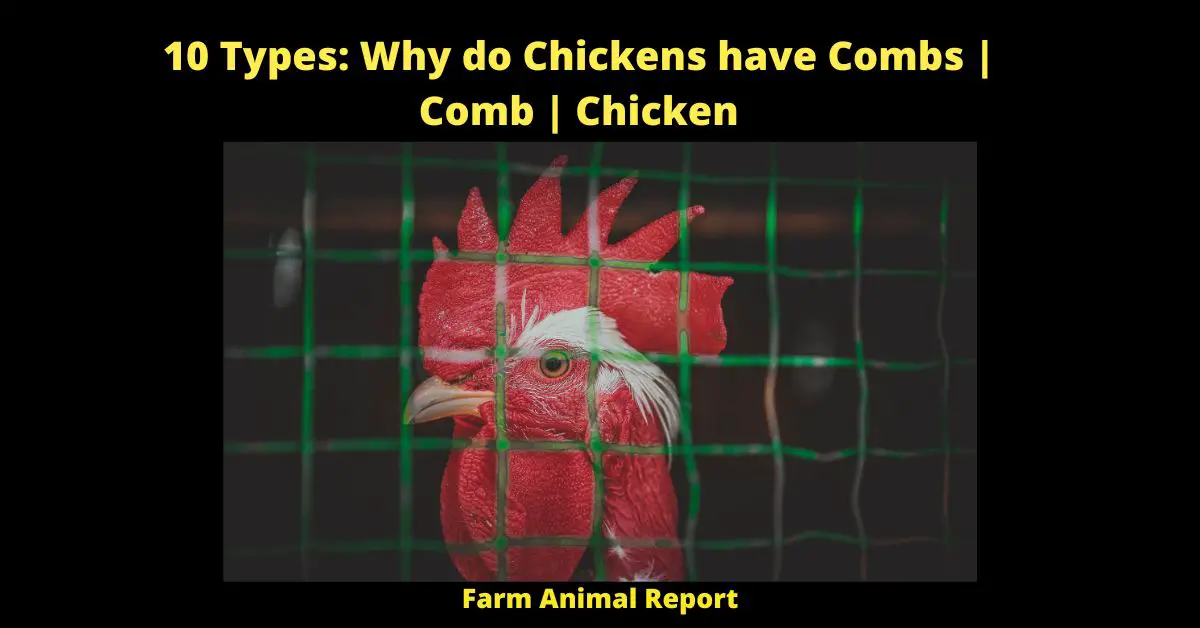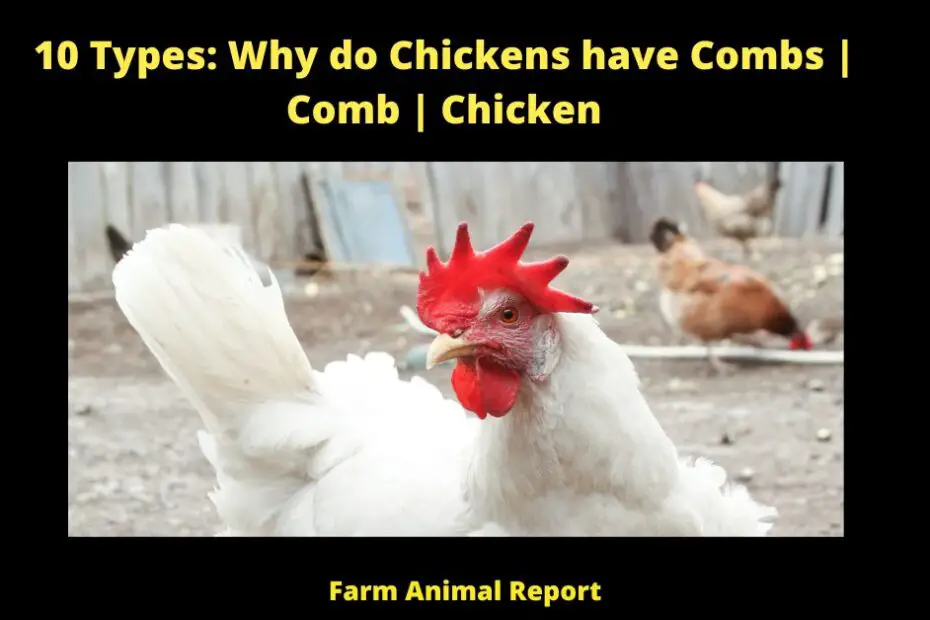Do you know why chickens have combs? It’s not just for looks! Chickens use their combs to regulate their body temperature. The comb is full of blood vessels, and when the chicken flaps its wings, it spreads the blood around to keep itself cool. Chickens also use their combs to groom themselves – they will pull the feathers on their head through the comb to clean them. Pretty neat, right?
Why do Chickens have Combs?
The primary purpose of a chicken’s comb is to keep the head cool. The blood vessels in the comb release heat, which is then dissipated by the surrounding feathers. In cold weather, a chicken’s comb may be erect to trap more heat, and in hot weather, the comb may be flatted against the head to provide more ventilation.
The other important function of the comb is to secrete pheromones, which are chemicals that stimulate social or sexual behavior in other chickens.
The presence of a comb tells a chicken that another bird is of the same species, and combs are used by chickens to assess dominance relationships. The size and shape of a chicken’s comb also play a role in mating: males with larger combs are more likely to be chosen as mates by females.
What is a Chicken’s Comb?
A chicken’s comb is a fleshy growth or crest on the top of the head of a chicken. It is used to cool the bird’s head and is generally red, but can be black or dark purple in breeds such as Silkies or Sebrights. The chicken’s comb is used to determine the bird’s sex, as it is generally larger on males than females.
What Types of Chicken Combs are There | Styles of Single Comb
There are 10 types of chicken combs: Buttercup, Carnation, Cushion, Pea, Rose Non-Spiked, Rose spiked, Single, Strawberry, V, and Walnut.
- Buttercup combs are small and round with a slight peak in the center. They are generally found on lighter-colored chickens.
- Carnation combs are large and round with a deep peak in the center. They are generally found on darker-colored chickens.
- Cushion combs are soft and pillow-like with no discernible peak. They are generally found on very small or very young chickens.
- Pea combs are small and triangular with a sharp peak in the center. They are generally found on game birds.
- Rose non-spiked combs have a gentle curve and no spikes. They are generally found on female chickens.
- Rose spiked combs have a sharp curve and numerous spikes. They are generally found on male chickens.
- Single combs have one long ridge with no peaks or dips. They are generally found on heritage breeds of chickens.
- Strawberry combs are large and round with deep swirls resembling a strawberry fruit. They are generally found on rare or exhibition poultry breeds.
- V combs have two long ridges that resemble the letter “V”. They are generally found on meat birds or dual-purpose breeds.
- Walnut combs are large and broad with a deep depression in the center resembling a walnut shell. They are generally found on heavy breeds of chickens such as the Jersey Giant or Brahma

Do Chicken Comb styles affect their Egg?
There is no definitive answer to this question. Some people believe that the shape and size of a chicken’s comb may affect the quality of their eggs, but there is no scientific evidence to support this claim.
Some farmers and consumers believe that chickens with larger combs (or “pea combs”) lay more eggs than those with smaller combs, while others believe that the shape of a comb has no bearing on egg production.
There is some evidence to suggest that the color of a chicken’s comb may be indicative of the color of their eggs, for example, hens with red combs tend to lay red eggs. However, there is no strict correlation between comb color and egg color, and different breeds of chickens can lay eggs of different colors.
What is an Undesirable Comb for a Chicken to have?
An undesirable comb for a chicken is one that is not red and does not match chicken comb standards. If a chicken has a comb that is not red, it may be penalized by the poultry show judge. An undesirable comb can also lead to problems with the chicken’s health, such as frostbite in cold weather or sunburn in hot weather.
Do all Chickens Have Combs?
No, not all chickens have combs. Chickens without combs are referred to as “combless” or “clean-headed.” Combless chickens are especially common in cold climates where keeping the head and comb warm is not necessary. Some chicken breeds, such as the Silkie and Sebright, have naturally small or absent combs.
Do Other Animals / Birds Have Combs?
Yes- most birds of the family Galliformes have combs on their heads, including turkeys, pheasants, and domestic chickens. However, there is a wide variety of shapes and sizes of combs among different species.

For example, the comb on a male wild turkey is much larger and more elaborate than that on a female, and the comb of a guineafowl is very small in comparison to that of a chicken. In some bird species, such as the cassowary, males do not have any comb-like growths on their head at all.
What are Chicken Comb Diseases | Chicken Comb Health
The most common diseases of chicken combs are caused by viruses. These diseases are often called “comb diseases” and can cause redness, swelling, and lesions on the comb. The most common viruses that cause comb diseases are the avian pox virus and the Newcastle disease virus. Other viruses that can cause comb diseases include the influenza virus, the Marek’s disease virus, and the reovirus.
Bacterial infections can also cause lesions on chicken combs. The most common bacteria that causes these infections is Staphylococcus aureus. Other bacteria that can cause infections of the comb include Streptococcus pneumoniae and Escherichia coli.
Fungal infections can also affect chicken combs. The most common fungus that affects combs is Aspergillus fumigatus.
How to Treat a Chicken with a Pale Comb?
When it comes to poultry, a chicken’s comb is an important indicator of health. A healthy comb should be bright red and well-circulated. If the comb starts to pale, it can be a sign of illness. There are a few different treatments that can help to bring color back to a pale comb.
First, make sure that the chicken has access to plenty of fresh water. Water helps to circulate blood and promote good circulation.
Second, consider adding some vitamins and minerals to the chicken’s diet. A lack of nutrients can lead to a pale comb.
Finally, make sure that the chicken is getting enough exercise. Exercise helps to improve circulation and can help bring color back to the comb. By following these simple steps, you can help to ensure that your chicken stays healthy and has a brightly colored comb.
Why is My Chickens / Hens Comb Bleeding?
If you’ve ever noticed your chicken’s comb bleeding, you might be wondering what could be causing it. After all, a healthy chicken should have a bright red comb that is free of any blemishes or wounds. So, what could be causing your chicken’s comb to bleed?
There are actually a few different reasons why a chicken’s comb might bleed. One possibility is that the comb has been damaged by another chicken. Chickens can sometimes get into fights, and if one chicken pecks at another’s comb, it can cause the blood vessels to rupture and bleed. Chickens can also damage their combs by running into objects or getting them caught in fences.
Another possibility is that the bleeding is due to an underlying health condition. For example, chickens can sometimes develop a condition called fowl pox, which causes sores and blisters to form on the comb. These sores can eventually rupture and bleed.
Chickens can also develop tumors on their combs, which can also lead to bleeding. If you notice your chicken’s comb bleeding, it’s important to consult with a veterinarian to rule out any serious health concerns.
In most cases, a little bit of bleeding from the comb is nothing to worry about. However, if the bleeding is excessive or if it continues for more than a day or two, it’s important to seek medical attention for your chicken. Bleeding from the comb can sometimes be a sign of a serious health problem, so it’s best to err on the side of caution and have your chicken checked out by a vet.
Why are Chickens / Chicks attracted Aggressively to the Color Red (Blood)?
Chickens are attracted to the color red for a variety of reasons.
First, the color red is associated with blood, which Chickens are known to be attracted to.
Second, the color red is also associated with danger and excitement, two things that Chickens are also known to be attracted to.

Finally, the color red is also associated with food, another thing that Chickens are known to be attracted to. Ultimately, the reason Chickens are so attracted to the color red is that it is associated with all of the things that Chickens find attractive: blood, danger, excitement, and food.
Farmers have known this for centuries, which is why so many of them use the color red in their coops and chicken feeders.
When raising chicks farmers use a red Light to help prevent any pecking attraction from the color red.
Final Thoughts – Why do chickens have Combs
- Breed
- Male / Female
- Cooling
The comb’s primary purpose is to regulate the chicken’s body temperature. The comb is full of blood vessels, and when the chicken gets too hot, the blood vessels in the comb expand and release heat. This helps to keep the chicken’s body temperature down.
God Bless Greg





